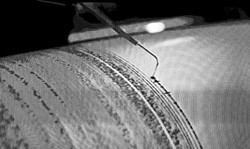Bridging the gap in seismic research
Fragmentation and limited access to RIs is dominating the scene in European seismic engineering. Through the EU-funded project 'Seismic engineering research infrastructures for European synergies' (SERIES)(opens in new window), 23 partners from 11 countries joined forces to improve earthquake engineering research in Europe by sharing infrastructure and resources. SERIES helped the RIs enhance their own potential by exchanging know-how, pooling their human resources, and jointly developing novel seismic testing systems and techniques. Through a number of networking activities, SERIES sought to disseminate RI findings, further increase awareness of RI capabilities and attract people. To reach the European scientific, technical and professional earthquake engineering community, project partners engaged the European Association for Earthquake Engineering (EAEE), the European body in charge of drafting and maintaining EN Eurocode 8, the European Earthquake Protection Initiative (EEPI), the International Federation of Structural Concrete (fib), the European construction industry, and relevant scientific and technical associations or networks. Outreach also involved training courses and four international open workshops. To foster development between RIs, project partners developed a web portal and a virtual database containing experimental information. Furthermore, the consortium offered the possibility for geographically distributed, concurrent testing at several RIs and a common protocol for qualifying earthquake engineering RIs in Europe. Through transnational activities, selected European research teams were offered the opportunity to conduct research at cutting-edge 'shaking table', 'reaction wall', 'pseudodynamic' and centrifuge testing facilities. In these 27 projects, industry involvement was remarkable, with potential benefits to promote innovation in seismic design practice in Europe. Joint innovative research toward new fundamental technologies and techniques in three areas was also performed. Through know-how and expertise transfer from the largest and most prominent seismic RIs, SERIES should help less advanced RIs in high-seismicity regions further emerge. In addition, it contributed to enhancing the competitive edge of European construction firms and engineering services in overseas markets compared to its international counterparts.







